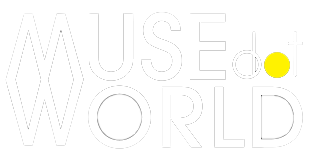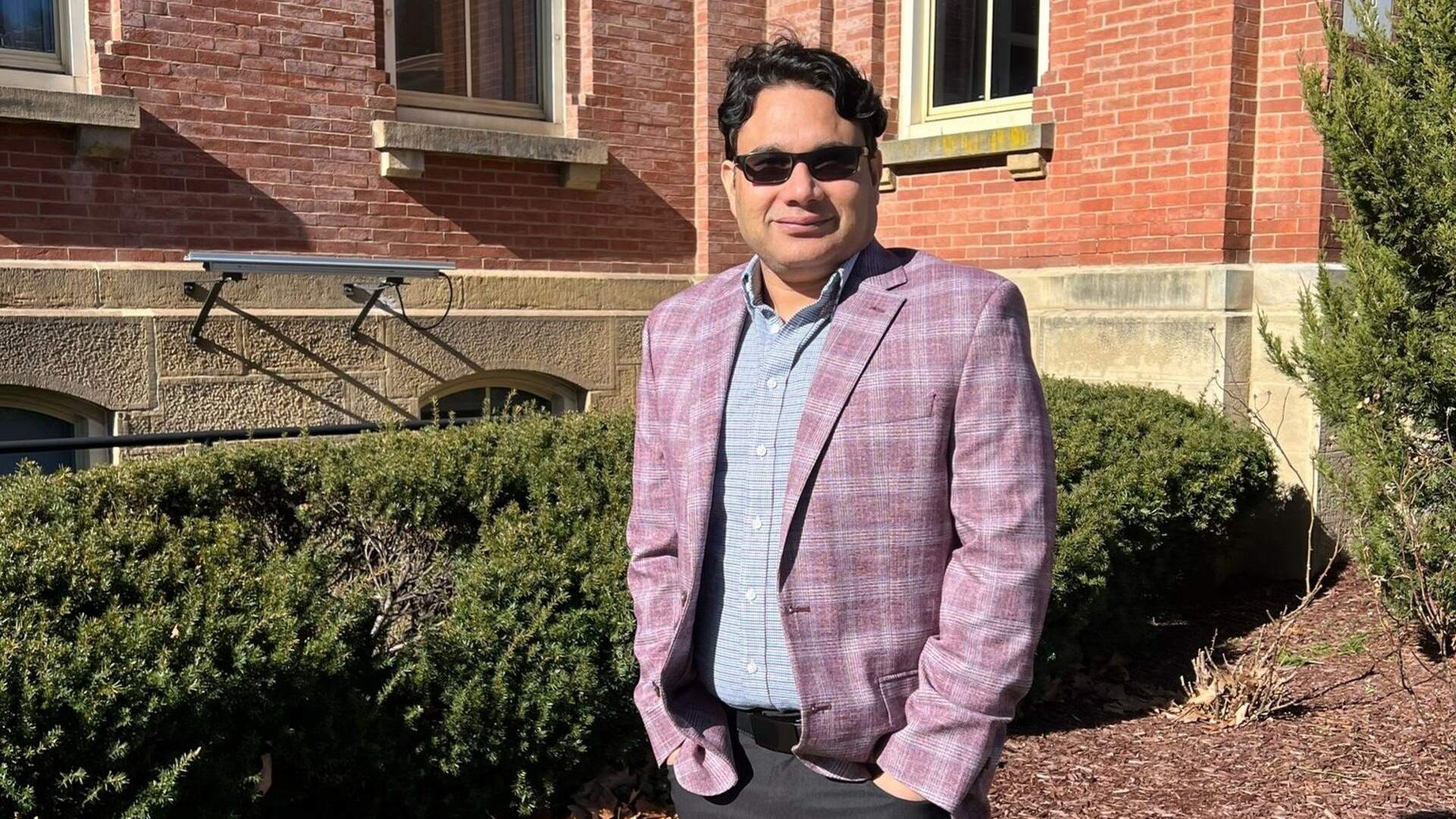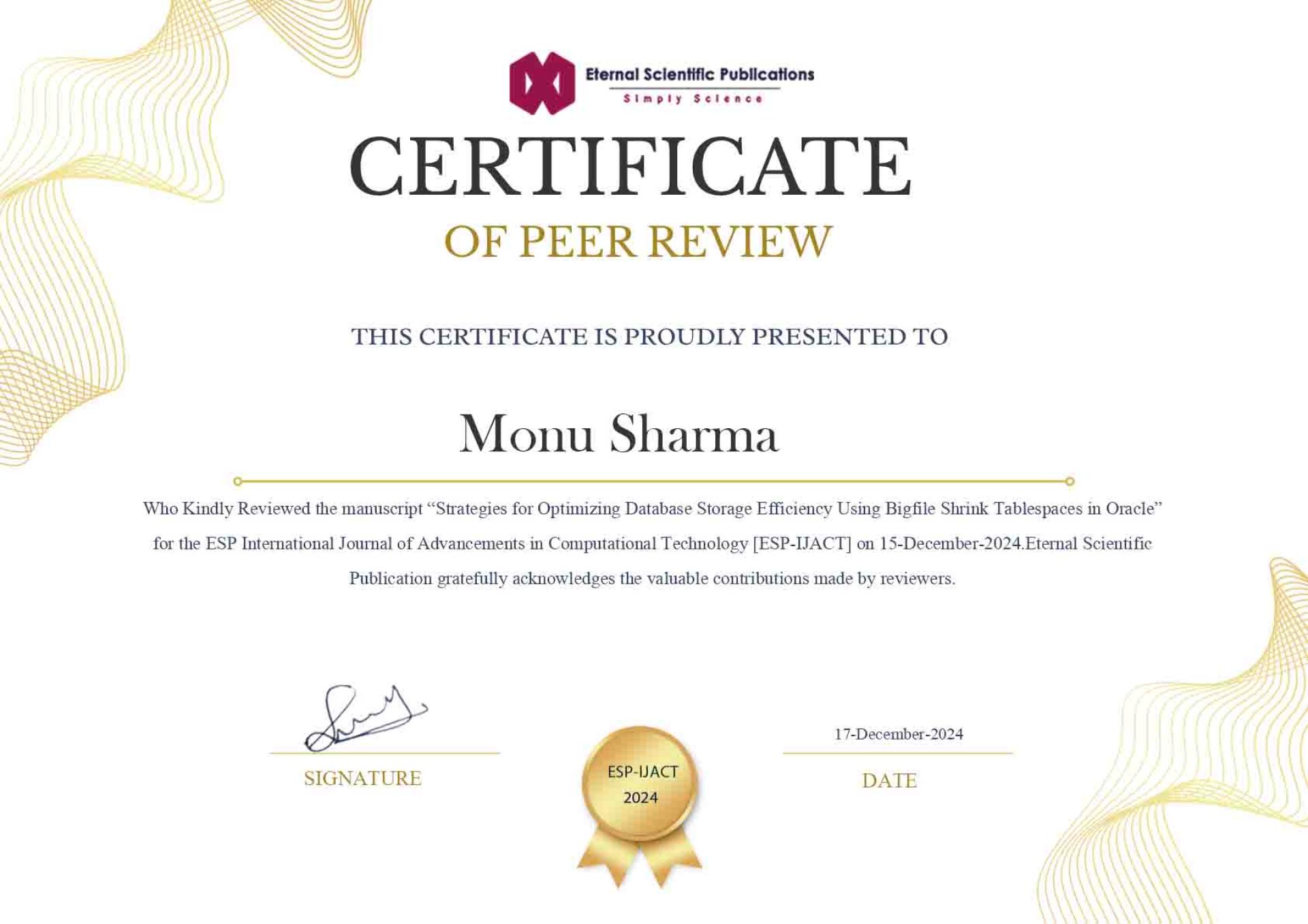Tech Talk with Monu Sharma about Modernizing Cloud Systems

Sasikiran Vepanambattu Subramanyam’s Approach to AI in Business Operations
April 28, 2025
Automobili Pininfarina B95 by Dave Amantea: A Product Design of the Year Triumph
April 28, 2025Monu Sharma
Monu Sharma is a Senior IT Solutions Architect with over two decades of experience driving enterprise transformation across healthcare, banking, and education. His work focuses on modernizing legacy systems and delivering scalable, cloud-based solutions that improve outcomes and create long-term value.
My name is Monu, and I’m a Senior IT Solutions Architect with over 20 years of experience in the technology space, primarily focused on healthcare, banking, and education sectors. I specialize in enterprise transformation—modernizing legacy systems, optimizing workflows, and implementing cloud-based solutions to drive efficiency and innovation.
Throughout my career, I’ve had the privilege of working closely with executive leadership to design and deliver scalable, high-impact solutions. I’ve also been actively involved in mentoring professionals, publishing scholarly work, and contributing to advancements in IT architecture and digital health. I’m passionate about using technology as a tool to improve lives and create lasting value in critical industries like healthcare.
Winning this award is a great affirmation of the innovative work we’re doing to transform healthcare through technology.
The motivation behind this submission stemmed from a deep commitment to solving real-world challenges in the healthcare industry-particularly around inefficiencies, data silos, and the need for real-time operational support. I’ve always believed that technology should not only simplify processes but also make a measurable impact on people’s lives. When I saw how much time and resources were being consumed by manual processes and outdated systems, I knew there had to be a better way.
This achievement perfectly aligns with both my personal mission and my organization’s goals: to improve patient care, drive operational efficiency, and support healthcare professionals through intelligent, scalable solutions. By implementing automated workflows, real-time inventory systems, and 24/7 digital support tools, we’ve not only saved millions in costs but also enhanced the quality and speed of care delivery.
Innovation, for me, is not just about new technology—it’s about making meaningful, sustainable improvements that empower people and organizations alike.
One of the key innovations was the development of a Worker Document Utility within Workday to securely upload and manage employee documents directly in the system. Traditionally, this process was handled by third-party tools or required manual intervention, leading to inefficiencies, increased costs, and potential security gaps.
By building this utility in-house, we eliminated the need for external systems, significantly reduced operational costs, saved time, and ensured compliance with internal data security policies. This solution also improved accessibility and audit readiness while reducing administrative overhead.
What made this solution unique was their holistic, end-to-end impact—addressing inefficiencies across HR, and clinical systems. By reducing third-party dependencies, increasing automation, and enhancing system-wide intelligence, we delivered measurable improvements that aligned with both organizational goals and national healthcare priorities.
My expertise and leadership were central to the success of this project, particularly in bridging the gap between technical execution and strategic business needs. With over 20 years of experience in IT and a deep understanding of healthcare systems, I was able to identify inefficiencies, design scalable solutions, and align technical implementation with organizational goals.
I led the end-to-end architecture of the solution—personally developing the Worker Document Utility within ERP, integrating Epic with ERP for seamless financial data flow, and building intelligent workflows that automated inventory management and notification systems. I also coordinated closely with Vice Presidents and CXOs to ensure the solutions addressed real pain points and delivered measurable value.
My hands-on leadership style ensured that we moved quickly from concept to execution. I minimized dependency on third-party vendors, significantly reduced project timelines, and ensured the systems were secure, compliant, and cost-effective. Moreover, I mentored junior team members throughout the process, helping build internal capabilities and ensuring knowledge transfer for long-term sustainability.
This project was not just a technical success—it was a strategic transformation, and my ability to lead cross-functional teams, think innovatively, and deliver with precision played a key role in its impact.
The innovation solves multiple critical issues across healthcare operations, HR, and financial processes—namely manual inefficiencies, third-party dependencies, lack of real-time visibility, and security vulnerabilities.
One major challenge was the secure handling of employee documents within HCM system. Traditionally managed through external systems, this process posed data security risks and added costs. I developed a Worker Document Utility within Workday, which centralized and secured document management, saved time, reduced expenses, and minimized compliance risks.
While I led the architecture, design, and implementation of these innovations, the support from my company and team was instrumental in bringing the ideas to life. The organization’s leadership were open to innovation and trusted my vision to modernize key operational areas. Their strategic alignment and willingness to invest in internal solutions created the right environment for transformation.
My team played a critical role in executing various components of the project. From testing integrations to validating workflows and ensuring cross-functional collaboration, their commitment and agility helped accelerate delivery timelines. I also made it a point to mentor junior team members throughout the process, ensuring skill-building and long-term knowledge retention within the organization.
In short, the company fostered innovation, the leadership empowered decision-making, and the team contributed with dedication and adaptability. This collective effort turned a bold vision into a sustainable, high-impact solution that is now driving real change across healthcare operations.
The primary impact I hope my innovation will have is a transformation in how healthcare organizations manage their operations, security, and patient care. By automating key workflows, integrating disparate systems, and creating secure, real-time solutions, I aim to set a new standard for operational efficiency, security, and patient outcomes.
Specifically, I hope this innovation will:
1. Reduce operational costs by eliminating third-party dependencies.
2. Improve data security through integrated, in-house solutions.
3. Foster technological innovation in healthcare by demonstrating that scalable, secure, and cost-effective solutions can be built internally, empowering organizations to continue evolving without heavy reliance on external vendors.
Winning this award is a powerful validation of my vision for technological progress and innovation in critical sectors like healthcare. It reflects my belief that technology should not only streamline operations but also drive tangible, positive impacts on people’s lives—whether it’s improving patient outcomes, enhancing data security, or reducing operational costs.
My vision has always been centered around creating scalable, secure solutions that empower organizations to transform their core operations without being overly reliant on external vendors or systems. This award recognizes the culmination of that vision—developing in-house solutions that improve efficiency, ensure data integrity, and enhance decision-making processes across healthcare organizations.
It also underscores my commitment to fostering innovation that aligns with real-world needs. By addressing common challenges in healthcare—like document management, financial data integration, and real-time inventory tracking—this innovation exemplifies how technology can be a catalyst for meaningful change in industries where operational efficiency and security are paramount.
Ultimately, this recognition strengthens my resolve to continue leading the way in technological transformation that prioritizes both business outcomes and human impact, paving the way for more organizations to embrace intelligent, scalable, and secure solutions for the future.
During the development process, I faced several key challenges—technical complexity, limited resources, and organizational resistance to change.
Another challenge was managing the scepticism around building internal tools—such as the Worker Document Utility—which traditionally relied on third-party platforms. I addressed this by creating a fully functional prototype that demonstrated the value in terms of cost savings, security, and ease of use, which helped win executive support.
There were also operational challenges, like coordinating across multiple departments with conflicting priorities and ensuring that the solutions worked 24/7 in a live healthcare environment. My ability to lead cross-functional teams, communicate clearly with stakeholders, and remain focused on the end goals helped drive the project forward.
Ultimately, it was a mix of technical expertise, leadership, and strategic problem-solving that enabled me to turn these challenges into innovative, high-impact solutions.
I see my innovation playing a transformative role in shaping the future of the healthcare industry by setting a new benchmark for efficiency, security, and digital self-sufficiency. By eliminating reliance on third-party tools, automating critical processes, and integrating complex systems , this innovation demonstrates what’s possible when technology is tailored to real operational needs.
Looking ahead, I believe this approach will encourage healthcare organizations to:
• Invest more in in-house innovation to reduce costs, improve agility, and maintain better control over sensitive data.
• Adopt intelligent automation to streamline administrative workloads, giving clinicians more time to focus on patient care.
• Build secure, integrated ecosystems that support real-time decision-making, improve compliance, and reduce risks related to fraud or human error.
• Scale solutions across systems and locations, leading to standardized best practices and greater consistency in care delivery.
Ultimately, I hope this work inspires a shift in the industry—from fragmented, vendor-heavy systems to smart, secure, and internally-driven innovation that puts both healthcare professionals and patients first. It’s about building a future where technology quietly powers better health outcomes, safer systems, and more efficient operations across the board.
Right now, I’m especially excited about the convergence of AI-powered automation, predictive analytics, and low-code/no-code platforms—all of which are reshaping how we approach enterprise solutions in healthcare and beyond.
1. AI and Machine Learning: The potential to use AI for predictive supply chain management, patient outcome forecasting, and anomaly detection in financial systems is huge. These technologies are already influencing my work by enabling smarter, faster decision-making and allowing us to shift from reactive to proactive operations.
2. Low-Code/No-Code Development: These platforms are accelerating digital transformation by allowing business users to build and modify workflows without relying heavily on IT. I’m actively incorporating these into enterprise architecture to empower users and reduce development cycles.
3. Interoperability & Real-Time Integrations: With healthcare systems needing to talk to each other seamlessly (e.g., Epic, Workday, third-party banks), technologies that support secure, real-time data exchange—like APIs and event-driven architectures—are critical. I’ve leveraged these to create robust, scalable integrations that improve both operational visibility and compliance.
4. Cloud-Native Architecture: The shift to fully cloud-based ecosystems is enabling faster scalability, improved uptime, and better disaster recovery. This directly supports my goal of building high-availability solutions for healthcare that are secure and cost-effective.
These trends not only inspire the solutions I build but also align with my broader vision: creating intelligent, secure, and future-proof systems that deliver real impact in mission-critical industries like healthcare.
My advice to individuals or teams working on transformative ideas is simple but powerful: focus on solving real problems, stay resilient, and never underestimate the impact of execution.
1. Start with the “why”: Make sure your innovation is grounded in a genuine need. The most impactful solutions aren’t the most complex—they’re the ones that solve real pain points efficiently and sustainably.
2. Stay resilient: Transformative ideas often face resistance—whether it’s from organizational inertia, technical hurdles, or resource limitations. Don’t let early scepticism or setbacks derail your vision. Push through with confidence, data, and a clear roadmap.
3. Prototype and prove: Don’t wait for perfection—build small, testable versions of your idea. A working proof of concept often speaks louder than a 100-page proposal.
4. Collaborate wisely: Surround yourself with people who bring complementary strengths. Innovation thrives on diversity of thought, and great execution requires more than just a good idea.
5. Think scale and sustainability: A true innovation isn’t just about fixing today—it’s about laying the foundation for the future. Consider security, scalability, and user adoption from day one.
Finally, be bold but grounded. Innovation isn’t always about reinventing the wheel—it’s often about finding better ways to make it roll.
Winning Entry
Developed Worker Documents Upload - WorkDoc Hub | TITAN Innovation Awards
This is a Studio Based program I developed to easily upload large volumes of files within a specific document category. Each file is linked to the correct employee by... (read more here)
Monu Sharma
Monu Sharma is a Senior IT Solutions Architect with over two decades of experience driving enterprise transformation across healthcare, banking, and education. His work focuses on modernizing legacy systems and delivering scalable, cloud-based solutions that improve outcomes and create long-term value.
Read the interview where Tanmaykumar Shah Shares What It Takes to Lead Marketing Tech here.







